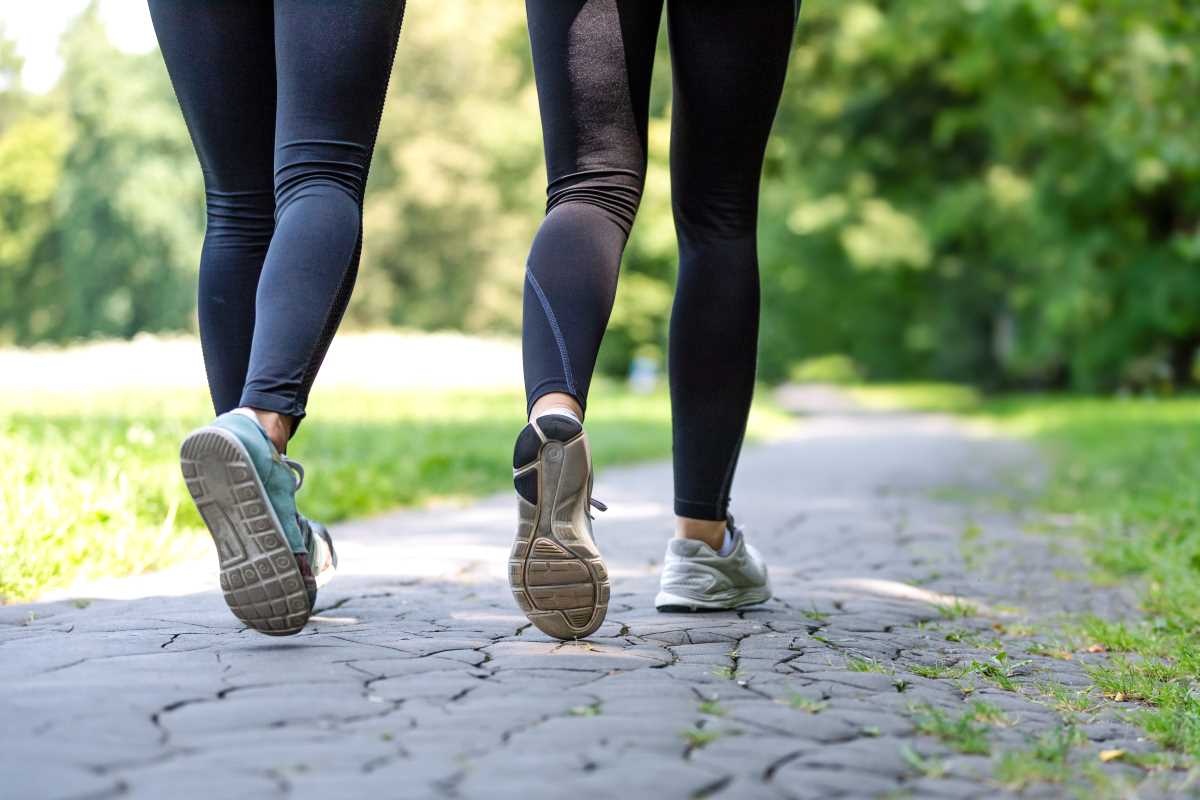Walking may not seem as intense as running, cycling, or hitting the gym, but don’t underestimate its power as a workout. Walking is one of the simplest, most accessible ways to improve your health, lose weight, and build endurance. Whether you’re a fitness newbie or someone looking to add variety to your routine, walking can be an effective tool to meet your fitness goals.
The beauty of walking lies not just in its simplicity but also in its versatility. You can customize your walking workouts to suit your goals, fitness level, and even your mood. Whether you want to drop a few pounds, improve your stamina, or just feel more energized throughout the day, this guide will show you how walking can help you get there.
Walking is often overlooked because it’s a moderate-intensity workout, but that’s also why it works so well for so many people. Here’s why walking is an excellent choice:
- It’s low impact: Unlike running or high-intensity exercises, walking is easy on your joints, making it a great option for all ages and fitness levels.
- It’s easy to start: You don’t need fancy equipment or a gym membership. Just a good pair of walking shoes and you’re ready.
- Burns calories: Walking burns calories, which contributes to weight loss when paired with a balanced diet.
- Builds endurance: Over time, walking longer distances or at higher intensities improves cardiovascular fitness and stamina.
Now that you know why walking is worth trying, let’s break down how to structure your walking workouts and what strategies can help you reach your weight loss and fitness goals.
How Walking Helps with Weight Loss
At its core, weight loss is about burning more calories than you consume. Walking can help create that calorie deficit in a sustainable way. Here’s how:
1. Burns Calories Steadily
Walking may not burn as many calories as running, but it’s still an effective way to shed extra pounds. The number of calories you burn depends on factors like your weight, walking speed, and terrain. On average, a 150-pound person can burn about 100 calories per mile walked.
2. Boosts Metabolism
Walking not only burns calories during your session but can also boost your metabolism. Brisk walking, in particular, has been shown to increase your resting metabolic rate (the calories your body burns while at rest).
3. Supports Long-Term Habits
Unlike extreme workouts or fad diets, walking is sustainable and easy to incorporate into your daily routine. Making walking a regular activity encourages gradual, lasting weight loss rather than short-term fixes.
How Walking Builds Endurance
Building endurance means training your body to sustain physical activity over longer periods. Walking does this by improving your cardiovascular fitness and muscular strength. Here’s how it works:
1. Strengthens Heart and Lungs
When you walk at a brisk pace, your heart rate increases, boosting circulation and lung capacity. Over time, these benefits enable you to walk longer distances or tackle challenging terrains with less effort.
2. Conditions Muscles
Walking engages multiple muscle groups, especially in your legs, hips, and core. By walking regularly, you’ll build strength in these areas, which will help you stay active longer without fatigue.
3. Gradual Progression
Walking builds endurance in a way that’s gentle on your body. Unlike more intense workouts, you can gradually push your limits without risking overtraining or injury.
Types of Walking Workouts for Weight Loss and Endurance
Walking is so versatile that you can design a workout for nearly any goal. Here are some examples to get you started:
1. Brisk Walking
This is the simplest form of power walking, where you walk at a faster-than-normal pace but not so fast that you’re running. Your heart rate should be elevated, but you should still be able to talk.
- Ideal for: Weight loss and general fitness
- How to do it: Walk briskly for 30–60 minutes, 3–5 times per week.
2. Interval Walking
Mixing periods of fast walking with slower recovery periods, interval walking challenges your cardiovascular system and burns more calories in less time.
- Ideal for: Speed, endurance, and weight loss
- How to do it: Walk as fast as you can for 1 minute, then slow to an easy pace for 2 minutes. Repeat for 20–30 minutes.
3. Hill Walking
Walking uphill engages more muscles and increases your heart rate, making it great for building strength and endurance.
- Ideal for: Endurance and muscle tone
- How to do it: Find a hill or set your treadmill to an incline. Alternate between walking uphill and walking on flat surfaces for 20–40 minutes.
4. Distance Walking
Long, steady walks are perfect for building endurance and burning calories over time.
- Ideal for: Endurance and calorie burn
- How to do it: Start with a distance you’re comfortable with (like 3 miles) and gradually increase by half a mile each week.
5. Weighted Walking
Adding light weights, such as ankle weights or a weighted vest, increases the intensity of your walk and helps build strength.
- Ideal for: Strength and calorie burn
- How to do it: Use weights that are comfortable (but challenging) and walk for 20–30 minutes. Be sure to maintain good posture to avoid strain.
6. Mindful Walking
This isn’t your typical workout, but walking at a comfortable pace while focusing on your surroundings, breathing, and posture offers mental and physical benefits.
- Ideal for: Stress relief and maintaining active rest days
- How to do it: Walk at a relaxing pace for 15–30 minutes, focusing on the rhythm of your steps and breathing.
Tips for Success
To get the most out of your walking workouts, keep these tips in mind:
1. Invest in Proper Shoes
Wearing supportive, comfortable walking shoes is essential for avoiding discomfort and injury.
2. Start with Small Goals
If you’re new to walking, start with shorter sessions (10–15 minutes) and gradually increase the length and intensity as your endurance improves.
3. Track Your Progress
Keep a log of your walks using a fitness tracker or an app on your phone. Tracking your distance, pace, and calories burned can help keep you motivated.
4. Make It Fun
Walking doesn’t have to feel like a chore. Invite a friend along, listen to music or a podcast, or explore new routes to keep things interesting.
5. Stay Consistent
Consistency is key to seeing results. Aim to walk at least 5 days a week and make walking part of your daily routine.
6. Stay Hydrated
Even though walking may not feel as intense as running or other workouts, hydration is still important, especially for longer walks.
 (Image via
(Image via





